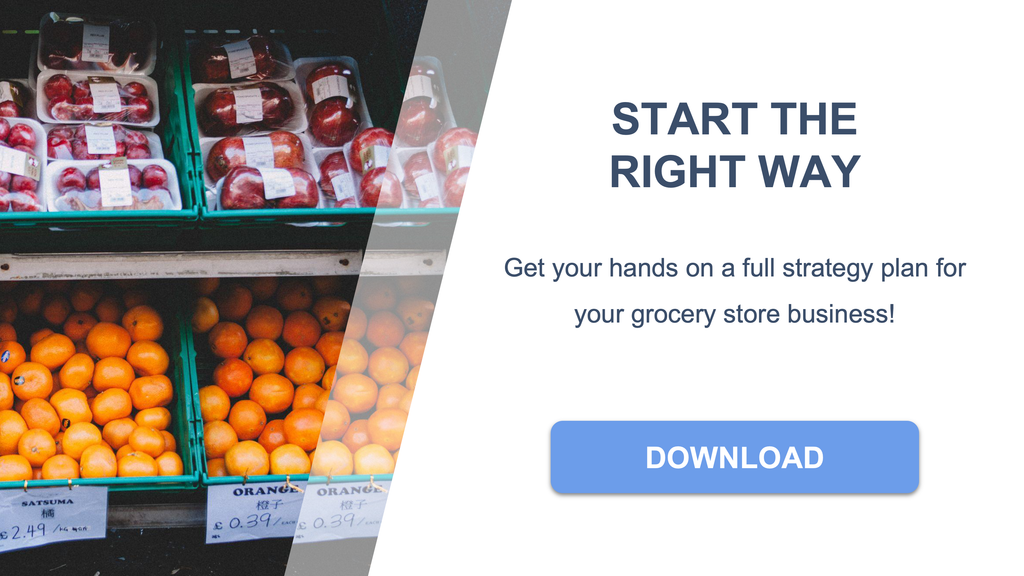This article discusses the profitability of grocery stores, answering common questions for entrepreneurs considering entering the grocery business. The insights provided are meant to guide you through understanding key factors such as profit margins, costs, sales strategies, and the financial aspects of running a grocery store.

Our business plan for a grocery store will help you build a profitable project
The profitability of a grocery store depends on various factors, including size, location, operating costs, and strategies used. To make sure your grocery store is successful, understanding key performance indicators (KPIs), initial investments, and the challenges of competition and overhead costs is crucial. Below is a summary table that breaks down the essential aspects of grocery store profitability.
| Aspect | Details | Key Figures |
|---|---|---|
| Profit Margins | Small stores typically see net margins of 1-3%, while larger stores or chains may achieve up to 3%. High-margin categories like prepared foods or private labels increase profitability significantly. | 1-3% for small stores, up to 3% for larger stores, higher margins from prepared foods and private labels. |
| Operating Costs | Costs like rent, utilities, and labor generally take up 15-20% of operating expenses, with rent typically between 5-10% of revenue. Labor costs can range from 8-14% of sales. | Rent: 5-10% of revenue, Labor: 8-14% of sales. |
| High-Margin Categories | Private label products and prepared foods contribute to higher profit margins. Private labels can deliver margins 25-50% higher than national brands. | Private label: 21% of sales, Prepared foods: 20-35% of gross profit. |
| Initial Investment | The capital required to open a grocery store varies widely. A small mini mart may need around $30,000–$70,000, while a supermarket can cost between $150,000 and $350,000. | Mini mart: $30,000–$70,000, Supermarket: $150,000–$350,000. |
| Break-Even Point | The time needed to break even typically ranges from 12 to 24 months, depending on store format and location. | Mini mart: 12-14 months, Larger stores: 18-24 months. |
| Shrinkage and Losses | Losses from shrinkage (spoilage, theft) are common, usually around 1-2% of sales. Effective inventory management and security measures can minimize these losses. | Shrinkage: 1-2% of sales. |
| Technology and Automation | Technology like POS systems, self-checkouts, and inventory analytics can improve efficiency and profitability by reducing costs and optimizing stock management. | POS systems and automation reduce labor costs, improve stock accuracy. |
What is the average profit margin for grocery stores of different sizes and formats today?
The profit margins for grocery stores can vary greatly based on the store’s size and format. Small independent grocery stores usually see net margins of 1-3%. Larger supermarket chains or franchises can achieve margins closer to 3% due to their scale advantages and better procurement practices. Some highly successful franchises, particularly in markets like India, may even see net margins of 15-20% before owner salaries and other operational costs.
How do rent, utilities, and labor costs typically affect the net profit of a grocery store?
Rent, utilities, and labor are significant operating expenses for grocery stores. Rent typically accounts for 5-10% of revenue in well-performing stores, and utilities along with repairs add another 10-15%. Labor costs can range from 8-14% of sales. Excessive costs in any of these areas can reduce the store's net profit if not carefully managed.
What percentage of total sales usually comes from high-margin categories like prepared foods or private labels?
High-margin categories, such as private label products and prepared foods, make up a growing share of grocery store sales. Private labels are projected to account for over 21% of sales in 2025, with margins up to 50% higher than national brands. Prepared foods contribute significantly to gross profits, accounting for 20-35% of gross profit, even if they represent only 10-20% of total sales.
How much initial capital investment is required to open a grocery store, and what is the typical payback period?
The initial capital investment needed to open a grocery store depends on the size of the store. A mini mart requires around $30,000–$70,000, while a supermarket typically costs between $150,000 and $350,000. Larger stores, such as hypermarkets, require more than $500,000 in capital. The payback period generally ranges from 12 to 24 months, with smaller stores breaking even faster than larger ones.
What are the average operating expenses as a percentage of sales in profitable grocery stores?
Operating expenses in grocery stores vary, but successful stores typically keep their total operating expenses around 20-25% of sales. This includes rent, utilities, labor, and other operational costs. Cost of goods sold (COGS) can make up 60-70% of total sales, leaving a net profit margin of 1-3% after all expenses are accounted for.
How does store location and foot traffic impact profitability per square meter?
Store location has a direct impact on profitability. Prime locations with high foot traffic—such as those near residential areas, offices, or transit hubs—drive higher sales and higher margins. While rent in these areas is often higher, the increased sales volume compensates for this cost. In contrast, stores in low-traffic areas may have lower rent but struggle with customer volume, which reduces profitability.
What are the most effective pricing and inventory strategies to maintain consistent profit margins?
- Use dynamic pricing based on local competition and demand.
- Focus on high-turnover staple products to ensure consistent traffic.
- Expand private label offerings to improve margins.
- Leverage inventory analytics to avoid overstocking and minimize dead stock.
- Regularly review product categories to ensure high-margin items are prioritized.
How much loss should be expected from spoilage, shrinkage, or theft, and how can it be minimized?
Grocery stores generally experience a loss of 1-2% of sales due to shrinkage, which includes spoilage, theft, and waste. To minimize these losses, stores should invest in robust inventory management systems, install security cameras, and provide staff with proper training on loss prevention and oversight at checkout points.
What is the realistic break-even point in terms of monthly sales or customer volume?
The break-even point varies depending on store size and location. A small mini mart might break even with monthly sales of around $8,000–$10,000, typically within 12–14 months. A mid-sized supermarket, on the other hand, may need to achieve monthly sales of $80,000–$120,000 to cover fixed costs and reach profitability within a few years.
How does competition from online grocery delivery and discount chains affect profitability trends?
Online grocery delivery services and discount chains have created intense price competition, leading to pressure on traditional grocery stores' profit margins. To stay competitive, many stores have expanded their private label offerings and introduced click-and-collect or delivery services. Adapting to these market trends is essential for maintaining profitability.
What financial benchmarks or KPIs do successful grocery stores track monthly to ensure profitability?
Successful grocery stores regularly track key performance indicators (KPIs) such as gross and net profit margin, sales per labor hour, sales per square meter, shrinkage rates, inventory turnover, and average transaction value. These metrics help store owners and managers monitor financial health and adjust strategies to maximize profitability.
How can technology and automation — such as POS systems, analytics, or self-checkouts — improve overall profit margins?
Technology plays a crucial role in improving grocery store profitability. Modern POS systems, inventory analytics, and self-checkouts help reduce labor costs and enhance stock management. Automation in warehouses and order picking also boosts efficiency, allowing stores to streamline operations and maintain higher profit margins.
Conclusion
This article is for informational purposes only and should not be considered financial advice. Readers are encouraged to consult with a qualified professional before making any investment decisions. We accept no liability for any actions taken based on the information provided.
Read more articles:
Grocery Store Profit Margins
Grocery Store Income Per Month
Complete Guide to Starting a Grocery Store
Understanding Grocery Profit Margins
Grocery Store Break-Even Point
Grocery Store Business Plan
Grocery Store Utilities Budget
Tool for Calculating Grocery Store Revenue
Grocery Store Maintenance Budget
Grocery Store Equipment Budget

